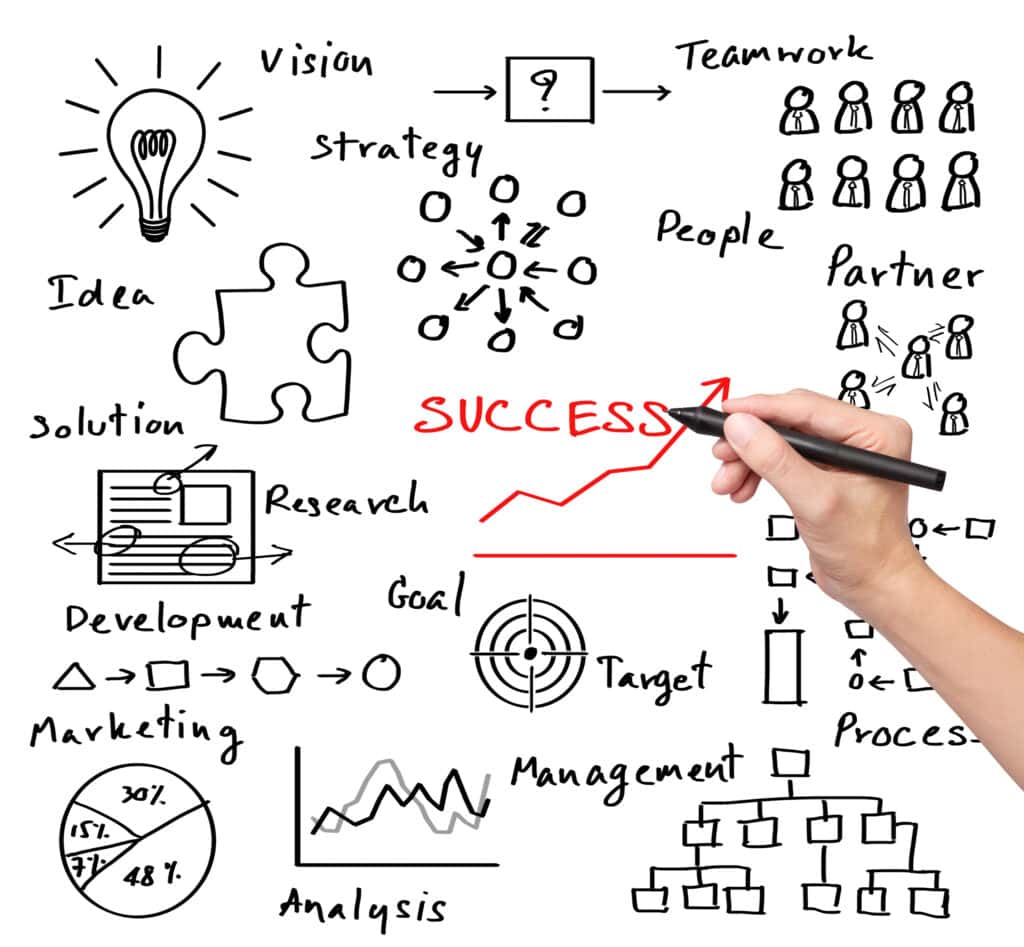Goals and expectations, while closely related, have distinct meanings and applications, especially in personal, professional, and organizational contexts. Please get out a pad to write your thoughts as you review the following as soon as you have any inkling that any of this makes sense for you.
SMART Goals:
- Definition: Goals are specific objectives that an individual, group, or organization strives to achieve. They serve as targets for one’s actions and decisions. Goals are typically well-defined, measurable, and have a set timeframe for achievement.
- Characteristics of SMART Goals:
- Specificity: Goals are often specific, outlining exactly what needs to be accomplished.
- Measurability: They can be measured, allowing individuals or organizations to track progress.
- Achievability: They should be realistically attainable, though they may also be challenging.
- Relevance: Goals are usually aligned with broader values, missions, or purposes.
- Time-Bound: Goals usually have a deadline or a specific timeframe for completion.
- Purpose: Goals provide direction and motivation, helping individuals or organizations focus their efforts and resources effectively. They also facilitate progress tracking and success measurement.

- Definition: Expectations are beliefs or forecasts about what will happen in the future, often based on past experiences, current information, or societal norms. Unlike goals, expectations are not always set deliberately and can be either realistic or unrealistic.
- Characteristics:
- Belief-Based: Expectations are often based on beliefs or assumptions about how things should be or how others should behave.
- Flexibility: They can be more fluid and changeable, adapting to new information or circumstances.
- Implicit or Explicit: Expectations can be clearly stated or implied, and sometimes they are not consciously recognized.
- Not Always Measurable: Unlike goals, expectations might not be quantifiable or specific.
- Influence Behavior: Expectations can significantly influence people’s behavior and attitudes, both positively and negatively.
- Purpose: Expectations help individuals form a mental model of what to anticipate in a given situation, guiding behavior and decision-making. They can also set standards for performance and interactions.
Comparing and Contrasting SMART Goals and Great Expectations:
- Similarity in Guidance: Both serve as guides. Goals direct actions towards a specific aim, while expectations shape beliefs about likely outcomes.
- Difference in Formation: Goals are typically set through a deliberate planning process, while expectations can form spontaneously based on past experiences or societal norms.
- Flexibility: Expectations are often more flexible and subjective, whereas goals are usually more concrete and objective.
- Measurability: Goals are typically measurable and have specific criteria for success, unlike expectations, which may be more abstract.
- Impact on Behavior: Both can significantly influence behavior, but in different ways. Goals motivate action towards achievement, while expectations can subtly shape behavior and attitudes, often without conscious awareness.
- Adjustability: Goals can be adjusted or changed based on circumstances, performance, or changing priorities. Expectations might also change but are often less consciously altered.
- Relation to Reality: Goals are aspirational and represent what we desire to achieve, whereas expectations are anticipatory, representing what we believe will happen.
Understanding the nuances between goals and expectations is crucial in both personal development and organizational management. Setting clear goals while managing realistic expectations can lead to more effective planning, higher motivation, and better overall outcomes. Setting great expectations and setting SMART goals for the new year, though related, involve different approaches and mindsets. Here’s a breakdown of each concept and how they differ:
 Setting Great Expectations for the New Year
Setting Great Expectations for the New Year
- Nature: Expectations are beliefs or forecasts about what might happen. They are often less about specific achievements and more about general outlooks or standards.
- Flexibility: Expectations can be more flexible and subjective. They are often influenced by past experiences, societal norms, and personal beliefs.
- Impact: Setting high expectations can create a positive mindset and an optimistic outlook for the year. It can increase motivation and drive.
- Risk: There is a risk of disappointment if expectations are set too high and are not met. This can lead to disillusionment or decreased morale.
- Examples: Expecting to improve overall health, expecting to find more balance in life, expecting to be more open to new opportunities.
Setting SMART Goals for the New Year
- Make your Goals SMART Goals.
- Nature: Goals are specific, measurable targets set to achieve desired outcomes. They are concrete and action-oriented.
- Clarity and Specificity: Goals are typically clear and specific, making it easier to develop strategies and action plans to achieve them.
- Measurability: Goals can be tracked and measured, allowing for a clear sense of progress and achievement.
- Motivation: Setting goals can provide a clear direction and a strong sense of purpose, driving focused action.
- Examples: Losing 20 pounds, reading 12 new books, achieving a specific sales target in your business, learning a new skill.
Comparing and Contrasting
- Outlook vs. Action: Expectations are more about the outlook or mindset for the year, whereas goals are about specific actions and achievements.
- Subjectivity vs. Objectivity: Expectations can be subjective and based on personal beliefs. In contrast, goals are objective, with clear criteria for success.
- Flexibility vs. Rigidity: Expectations can change and evolve more easily than goals, which are typically more fixed and structured.
- Motivational Impact: Both can be motivating, but in different ways. Expectations can create a positive overall mindset, while goals provide clear targets to work towards.
- Risk of Disappointment: Unrealistic expectations can lead to disappointment, whereas unmet goals can be adjusted or reevaluated based on performance and circumstances.
Best Practices for New Year Resolutions Based on SMART Goals & Great Expectations
To maximize effectiveness, it’s beneficial to set both realistic expectations and achievable goals for the new year:
- Align Expectations and Goals: Ensure that your expectations and goals complement each other. Goals should be set in a way that reinforces your positive expectations.
- Manage Expectations: Be optimistic but realistic. High expectations are good, but they should be tempered with a realistic understanding of what can be achieved.
- SMART Goals: Set Specific, Measurable, Achievable, Relevant, and Time-bound goals to increase the chances of success.
- Flexibility: Be prepared to adjust both expectations and goals as the year progresses and circumstances change.
In conclusion, setting expectations and goals for the new year are both important. Expectations set the tone and mindset, while goals provide a roadmap for what you want to achieve. Balancing both leads to a more productive and fulfilling year. Setting “great expectations” for the new year involves creating a positive and ambitious outlook for what you wish to achieve or experience. Unlike specific goal setting, crafting great expectations is more about shaping your mindset and attitude toward the upcoming year. Here’s a guide on how to effectively set these expectations:
- Reflect on the Past Year:
- Assess and Learn: Reflect on the past year’s experiences, challenges, and achievements. Consider what went well and what could have been better.
- Gather Insights: Identify key lessons learned that can inform your expectations for the new year.
- Define Your Vision:
- Broad Outlook: Think about the overall direction you want your life, career, or personal development to take in the new year.
- Inspiration and Aspirations: Consider what inspires you and what you aspire to be or achieve. This vision will guide your expectations.
- Cultivate a Positive Mindset:
- Optimism: Foster an optimistic outlook. Believe in the potential for positive change and growth.
- Resilience: Build resilience to face challenges, understanding that setbacks are part of the journey.
- Set Ambitious, Yet Realistic Expectations:
- Balance: Aim high but remain grounded in reality. Avoid setting expectations so high that they become a source of stress or disappointment.
- Flexibility: Be open to adapting your expectations as circumstances change throughout the year.
- Focus on Personal Growth and Development:
- Self-Improvement: Set expectations that promote your personal and professional growth.
- Learning: Embrace new learning opportunities and experiences.
- Prioritize Health and Well-being:
- Physical and Mental Health: Expect to take better care of your physical health and mental well-being.
- Balance: Aim for a balanced lifestyle that includes work, leisure, and rest.
- Embrace New Opportunities:
- Openness: Be open to new possibilities and opportunities that may arise.
- Adventurous Spirit: Encourage yourself to step out of your comfort zone.
- Enhance Relationships and Community Engagement:
- Relationships: Expect to invest time and energy in building and strengthening relationships.
- Community: Look for ways to contribute positively to your community or social circles.
- Document Your Expectations:
- Write It Down: Documenting your expectations can help clarify and solidify them.
- Visualization: Create a vision board or use visualization techniques to keep your expectations vivid in your mind.
- Review and Adjust Periodically:
- Regular Check-ins: Periodically review your expectations to see if they align with your evolving circumstances and priorities.
- Adaptation: Be willing to adjust your expectations as needed.
Remember, setting great expectations is not just about what you aim to achieve; it’s also about cultivating a mindset that is optimistic, resilient, and open to growth and new experiences. It’s about setting the tone for a year that is fulfilling, enriching, and aligned with your overall vision for your life. We hope you keep these thoughts in mind, whether on the ‘back-burner’ or actively in the forefront of your thoughts and actions to create SMART Goals, Great Expectations, and solid, fulfilling New Year Resolutions.
Happy New Year!
Please contact us with questions. Best to call, email or visit our site for the best response. We do invite you to engage with us on social media (just not for immediate needs).
As always, if you like, you will find us on the following social media sites, among many others:
Facebook
LinkedIn
Twitter
Composed by Keith Klein, Author of WebForging, Founder & CEO of OnYourMark, Chief Blogger at Bloggey.com, and Proprietor of MainStreetOil.com – along with a big AI assist. Feel free to use this post yourself, with this last paragraph, including live links, as attribution.

 Setting Great Expectations for the New Year
Setting Great Expectations for the New Year